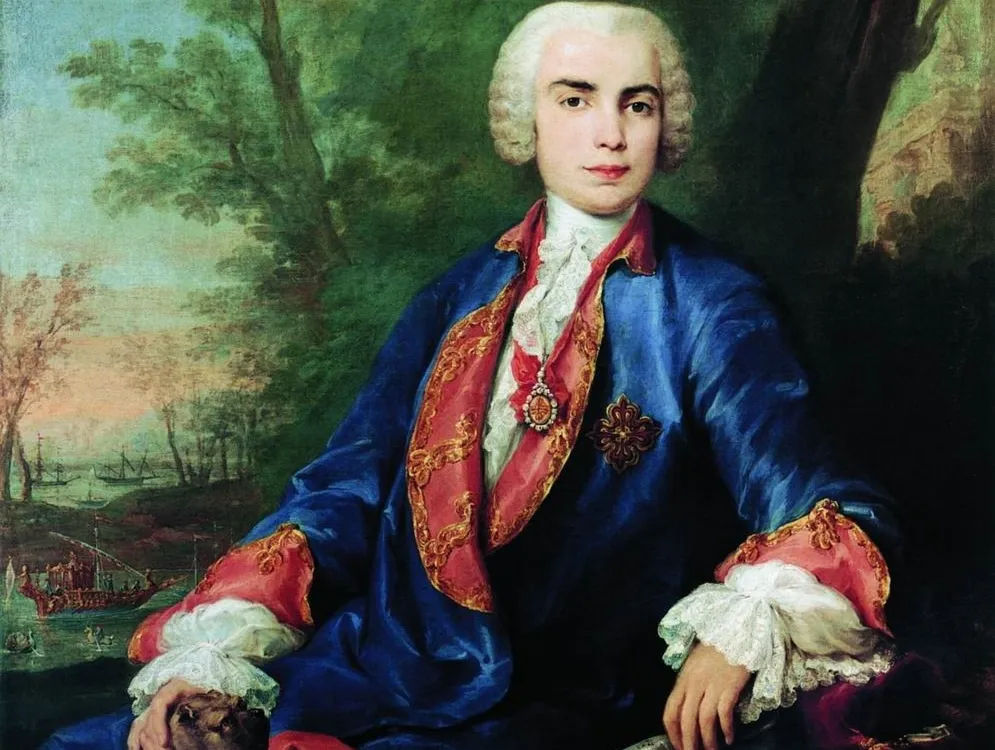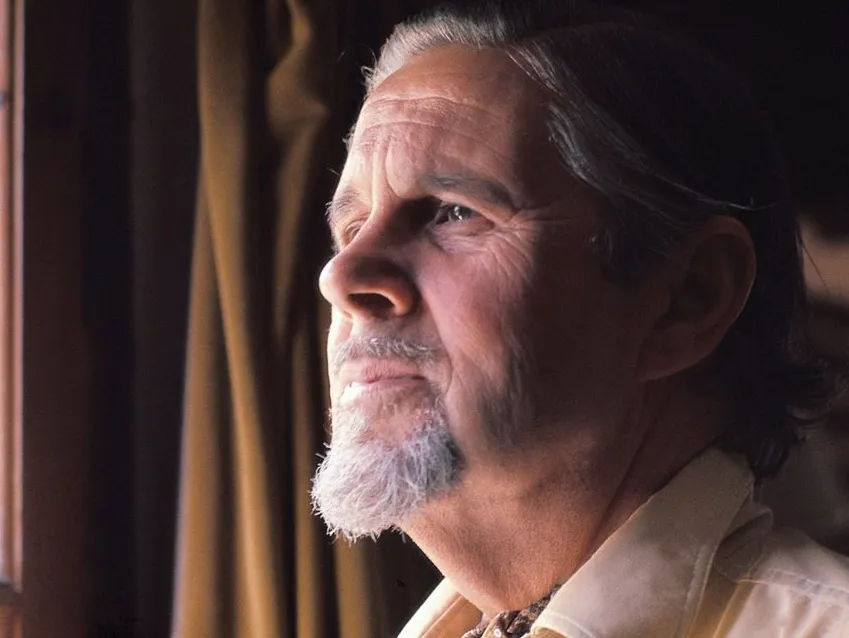The counter-tenor voice is a type of adult male singing voice that falls in the range between a tenor and a mezzo-soprano or an alto. The voice has a lightness, agility, and purity that can be both hauntingly beautiful and emotionally evocative, allowing for a sense of otherworldliness.
Hearing the counter-tenor voice live for the first time can be a powerful experience. The voice’s unique timbre and tonal quality can surprise and even overwhelm some listeners, particularly those unfamiliar with the sound. I recall attending a performance by Andreas Scholl in Dubrovnik, where a young English boy was moved to tears by the beauty and clarity of his voice. I spoke briefly with the boy at the end of the concert, and he couldn’t quite explain his reaction, but his smile was unforgettable. A similar thing happened to me at an outdoor performance of Handel’s opera Ariodante. It was an outdoor event, very intimate, with something like 80 seats assembled around a rectangular cloistered setting. As the music played and the counter-tenor started singing, I was transported, experiencing something so beautiful and profound that I felt lifted to the heavens. It was a quite extraordinary experience, as if the entirety of God’s design was being laid out before me. I’ve been hooked on the counter-tenor voice ever since.
“The counter-tenor voice has a haunting, ethereal quality that can touch the soul in a way that no other voice can.” (James Bowman, English counter-tenor)
High notes in history
The high male voice has a long musical history, dating back to ancient Rome and Byzantium, where eunuchs were used as singers and musicians. During the late Middle Ages and Renaissance, what we now know as the counter-tenor voice was primarily used in the polyphonic church music of 14th and 15th century France, England, and Italy. In choral music, the counter-tenor voice was incorporated for its floating, angelic quality. Notable composers who wrote for this type of voice during the Renaissance include Guillaume Dufay, Johannes Ockeghem, and Thomas Tallis. John Dowland was also a significant composer of the Renaissance period who wrote music specifically for the counter-tenor voice.
In early music, the term counter-tenor was often used to refer to a high tenor voice, rather than the falsetto or head voice that is commonly associated with the term today.
During the Baroque era, the counter-tenor voice was prominently used in sacred music, such as cantatas, oratorios, and Mass settings, as well as in opera. Composers who wrote for the counter-tenor voice include Henry Purcell, George Frideric Handel, and Johann Sebastian Bach. The agility of the counter-tenor voice lends itself well to the florid vocal runs and ornamentation common in Baroque music.
However, the popularity of the counter-tenor voice declined in the Classical period (late 1700s-early 1800s), as opera shifted towards a more naturalistic style of singing that emphasized a lower, more masculine sound. Classical composers like Mozart and Gluck favored a more restrained, simple style of singing that emphasized the importance of declamation and expression of text over the ornate, virtuosic vocal runs and ornamentation of the Baroque era. The emergence of a middle class audience for opera during the Classical period meant that composers began to write music that was more accessible to a wider range of listeners, with simpler melodies and more relatable characters and storylines.
In the 20th century, the counter-tenor voice experienced a resurgence, particularly in the performance of early music, with singers such as Alfred Deller and James Bowman. Today, the counter-tenor voice is still heard in classical music, and can also be found in other genres such as pop music. Klaus Nomi (who worked with David Bowie), was a counter-tenor and all-round interesting chap who recorded classical and pop music.
Early songs for the counter-tenor voice
- Gloria ad modum tubae by Guillaume Dufay
- Missa prolationum by Johannes Ockeghem
- Purge Me, O Lord by Thomas Tallis
- Flow My Tears by John Dowland
- Can She Excuse My Wrongs? by John Dowland
- Come Again, Sweet Love Doth Now Invite by John Dowland
- Cum dederit from Vivaldi’s Nisi Dominus
- Pur ti miro from Monteverdi’s L’incoronazione di Poppea
- The Noble Famous Queen by William Byrd
- Those Sweet Delightful Lilies by Thomas Weelkes
Baroque voices and the castrato tradition

The castrati were male singers who had their testicles removed before puberty, allowing them to sing in the soprano or alto range while maintaining the power and strength of an adult male voice. This practice became prevalent during the Baroque era and was particularly prominent in Italian opera. However, the haute-contre or counter-tenor voice (testes integri) continued to be popular in England and France during this time.
Handel, who was heavily influenced by Italian opera, wrote many of his operas and oratorios with castrati in mind. Some of the most celebrated castrati who sang in Handel’s works include Farinelli, Gaetano Berenstadt, Giovanni Carestini, and Francesco Bernardi, known as Senesino. The use of castrati fell out of favor eventually, but the tradition of using high-pitched male voices continued with the counter-tenor and male singers who use the falsetto technique to produce similar sounds.
Carlo Broschi, better known as Farinelli, was one of the most famous castrati in history. Born in Naples in 1705, he became renowned for his technical mastery and emotional delivery as a singer. Farinelli was famous for his ability to sustain complex vocal runs and his powerful high notes. He retired from public performance in 1737 and spent the rest of his life in the service of the Spanish royal family. His legacy inspired the film Farinelli (1994) and the play Farinelli and the King (2015), which tells the story of his time as a court musician for King Philip V of Spain.
“He has the power of moving the passions as I do myself; the same expression, the same feeling, the same taste and the same spirit.” (Handel, speaking of Farinelli)
As for the difference between eunuchs and castrati, eunuchs were castrated before or after puberty for various reasons, such as to serve as guards or servants for royal households. A eunuch in charge of guarding a harem could be trusted, while a eunuch in the military wouldn’t have a family to distract him. Castrati, on the other hand, were male singers who were castrated before puberty to preserve their high singing voices into adulthood. Typically, only their testicles were removed, while their penises remained intact. Eunuchs, however, might undergo a more complete castration, in which both their testicles and their penises were removed.
Alessandro Moreschi, the last castrato on record
The Italian singer Alessandro Moreschi, one of the last surviving castrati, made a famous recording in 1902. Moreschi worked as a singer in the Sistine Chapel choir in Rome, and the recording features him singing pieces from the church repertoire, including Ave Maria and Crucifixus. The recording was made on a wax cylinder and, although the quality is poor, it provides a rare glimpse into the sound of the castrato voice. It is worth noting that Moreschi's singing style is different from that of modern counter-tenors due to the castration procedure altering his voice and his training being in a different style of singing.
Handel arias originally written by Handel for castratos
- Ombra mai fu from the opera Serse
- Cara sposa from the opera Rinaldo
- Se potessero i sospir miei from the opera Imeneo
- Fammi combattere from the opera Orlando
- Scherza infida from the opera Ariodante
- Da te più tosto partir vogl’io from the opera Ademeto
- Torna sol per un momento from the opera Tolomeo
- Furibondo spira il vento from the opera Partenope
- Where’er you walk from the opera Semele
- O Lord, Whose Mercies Numberless from the oratorio Saul
Reviving lost voices from the past

In the 20th century, the counter-tenor voice experienced a resurgence in popularity due to the renewed interest in early music and historically informed performance, which sought to recreate the sound and style of music from earlier periods using period instruments and singing techniques.
Alfred Deller, born in 1912 in Margate, Kent, England, is widely considered to be one of the pioneers of the modern counter-tenor voice. He revived the old tradition of singing in a high range using a natural, unaltered voice, and his performances helped to spark a renewed interest in the counter-tenor voice at a time when it was largely out of fashion.
Other singers who contributed to the revival of the counter-tenor voice in the early 20th century include Charles Daniélou, a French singer specializing in singing medieval and Renaissance music in the high range, and Helmut Krebs, a German singer known for his ability to sing both baroque and contemporary music in the high range.
However, it was Deller who truly brought the counter-tenor voice back into the spotlight, and his legacy can be seen in the many male singers who have followed in his footsteps since then, such as Iestyn Davies, Robin Blaze, Thierry Grégoire, Andreas Scholl, Philippe Jaroussky, Daniel Taylor, Michael Chance, David Daniels, and Jakub Józef Orliński.
“The counter-tenor voice is a bridge between heaven and earth, a reminder of the divine beauty that exists in the world.” - Andreas Scholl, German counter-tenor
Music to get you high

Henry Purcell is a celebrated English composer of the Baroque era, recognized for his expressive and intricate vocal music. His compositions for counter-tenor are highly regarded for their beauty and technical complexity, showcasing the singer’s range and flexibility. Purcell’s music is distinguished by his use of English folk melodies, harmonic techniques, and meticulous word setting.
Melancholy is a common theme in his works, conveyed through his use of minor keys, chromatic harmonies, and haunting melodies that are well-suited to the introspective and intimate counter-tenor voice. When I Am Laid in Earth (Dido’s Lament) is his most famous aria, often performed by counter-tenors, and expressing a sense of longing and loss through Nahum Tate’s poignant lyrics.
“When I am laid, am laid in earth, may my wrongs create No trouble, no trouble in thy breast; Remember me, remember me, but ah! forget my fate.” When I Am Laid in Earth (Nahum Tate)
The sounds of sadness, English melancholy in music
English music is often characterized by a melancholic strain, which is particularly evident in the works of John Dowland and Henry Purcell, as well as in the music of later composers like Ralph Vaughan Williams and Benjamin Britten. This quality has been attributed to various factors, including the country's climate, national temperament, political and religious history, and cultural influences such as the concept of the Byronic hero. Even in pop music, bands like The Smiths have incorporated this melancholic quality into their songs.
Popular Purcell compositions for the counter-tenor voice
- Sound the Trumpet
- Here the Deities Approve
- An Evening Hymn (Now that the sun has veiled his light)
- O Solitude, My Sweetest Choice
- What a Sad Fate is Mine
- Music for a While
- If Music Be the Food of Love
- The Plaint
- Since from My Dear Astrea’s Sight
- Sweeter Than Roses
- Strike the Viol
- Fairest Isle
Fairest Isle should be England’s national anthem when the English take their country back.
Bach’s whispers from the Holy Ghost
In German theological tradition, the alto voice is associated with the Holy Ghost. This association dates back to medieval times when the high voice was used in liturgical music to represent the third person of the Trinity. Bach’s use of the alto voice, whether boy alto or falsetto, was a deliberate choice based on his religious beliefs and the suitability of the voice for the sacred texts he set. Bach composed several cantatas featuring the alto voice, including “Nach dir, Herr, verlanget mich” (BWV 150) and “Ich habe genug” (BWV 82), in which the alto voice represents the voice of the soul longing for God’s love and mercy.
“Bach’s music is like a benevolent deity, a whisper from the world of spirits, speaking to us in our own language, as if the Holy Ghost himself were speaking through him.” (Felix Mendelssohn)
Bach cantatas featuring alto voice
- Widerstehe doch der Sünde (BWV 54)
- Vergnügte Ruh, beliebte Seelenlust (BMV 170)
- Geist und Seele wird verwirret (BWV 35)
- Gott soll allein mein Herze haben (BWV 169)
- Bekennen will ich seinen Namen (BWV 200)
- Gottes Zeit ist die allerbeste Zeit (BWV 106)
- Himmelskönig, sei willkommen (BWV 182)
- Ich habe genug (BWV 82)
- Schlage doch, gewünschte Stunde (BWV 53)
- Leichtgesinnte Flattergeister (BWV 181)
The BMV numbering system is known as the “Bach-Werke-Verzeichnis” (BWV), which is a catalogue of Bach’s works compiled by Wolfgang Schmieder in the mid-20th century. The catalogue lists over 1,000 works by Bach, including his cantatas, chorales, preludes, fugues, suites, and other compositions.
The timeless beauty of the counter-tenor voice
Throughout history, many composers have celebrated the counter-tenor voice in their music. These works often have a mystical and transcendent quality.
If you’re intrigued by the ethereal beauty of the counter-tenor voice, why not take a listen to our curated Spotify playlist? It’s the perfect way to immerse yourself in the haunting harmonies and soaring melodies of this remarkable vocal range.






